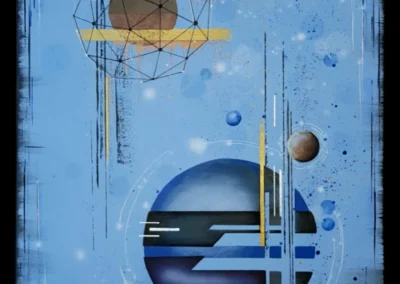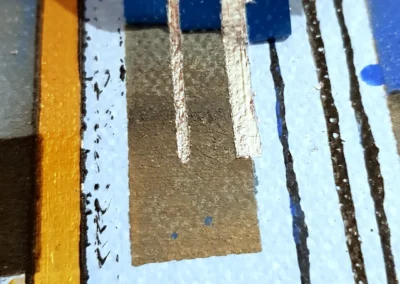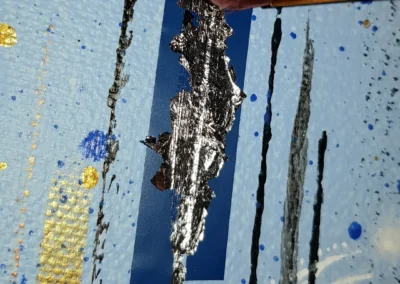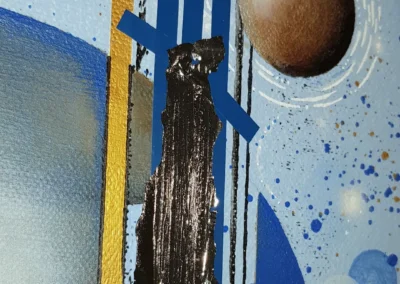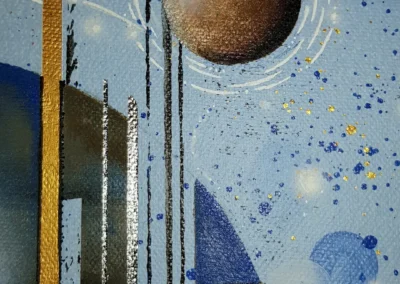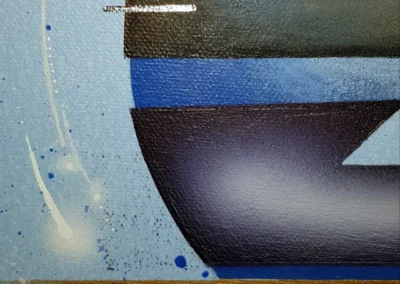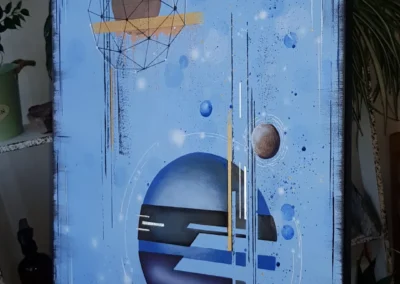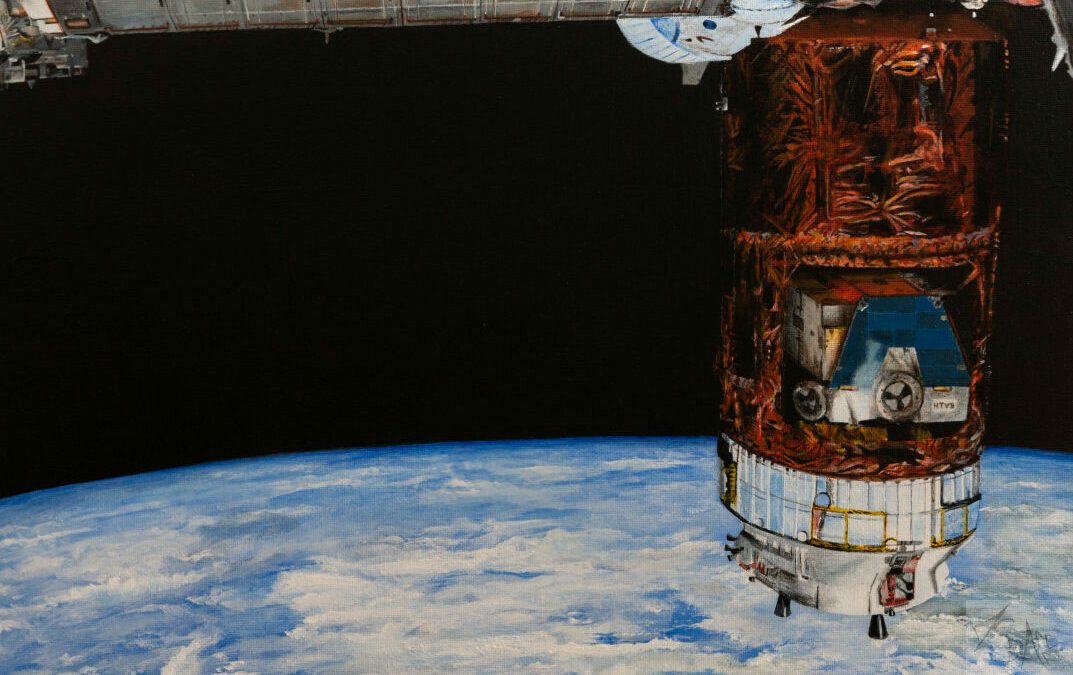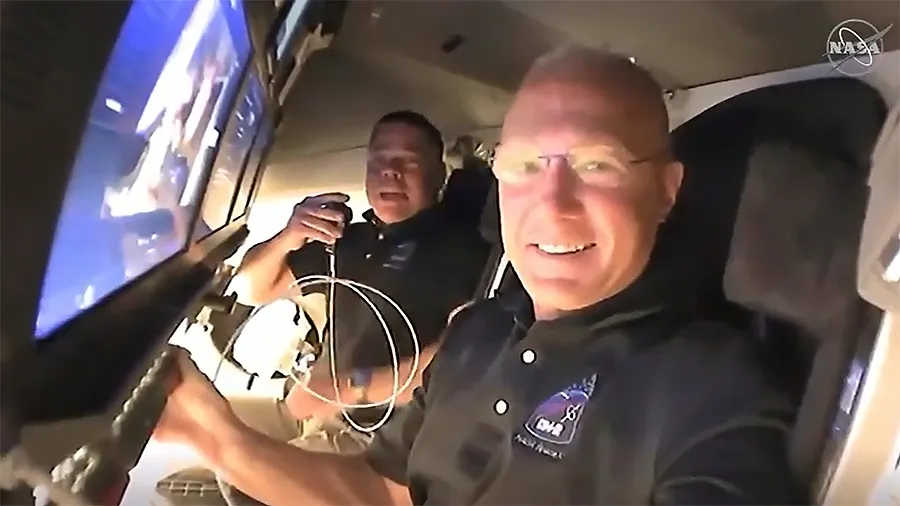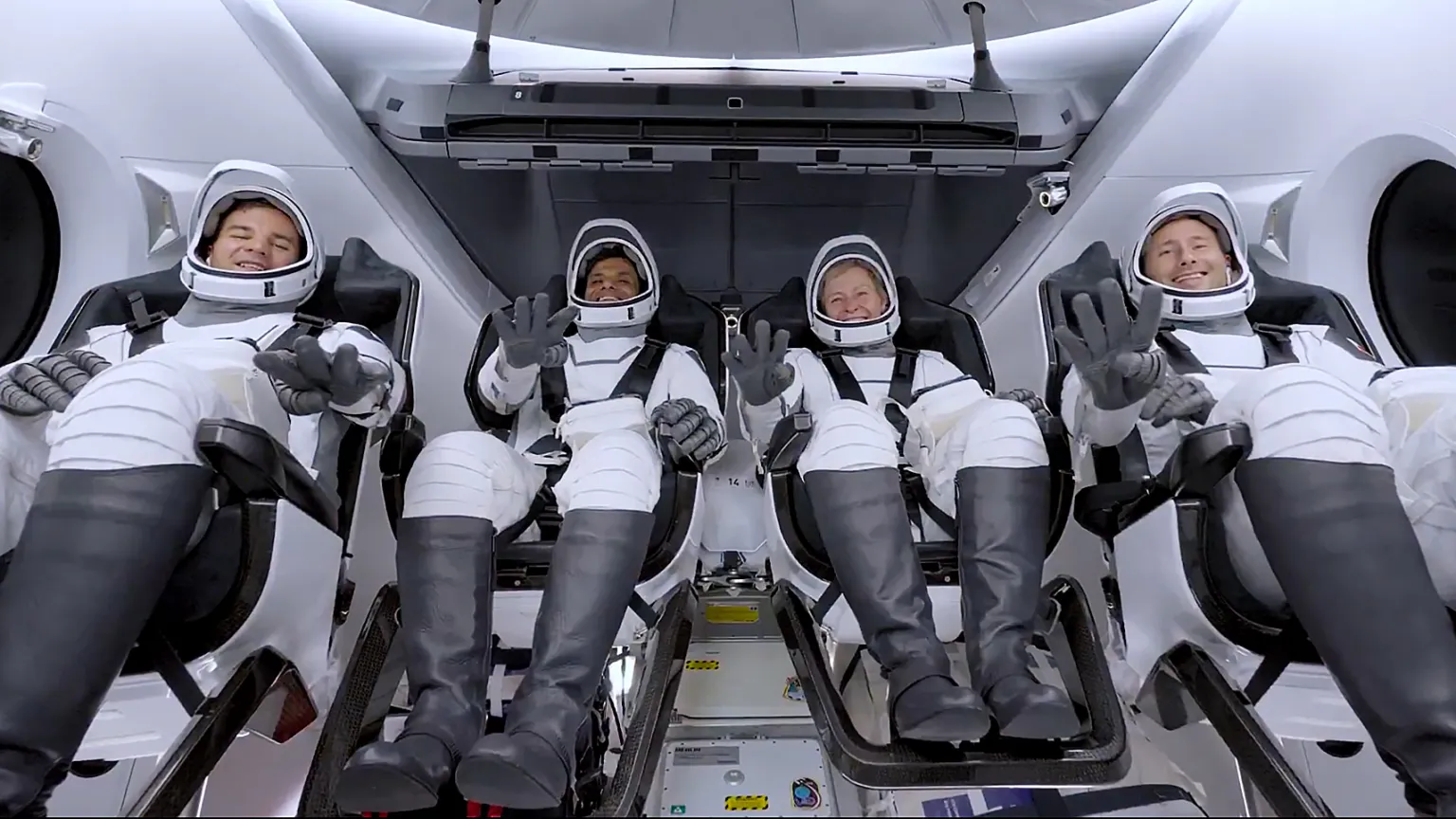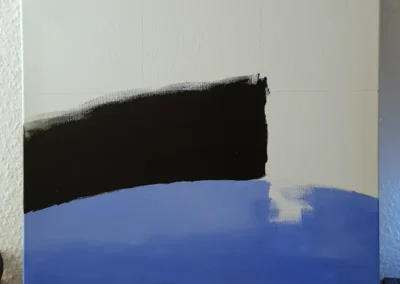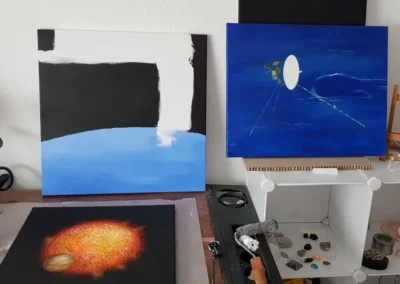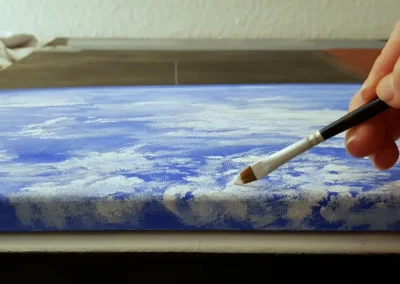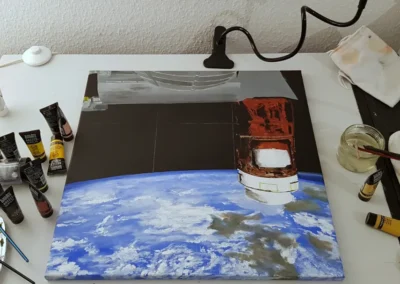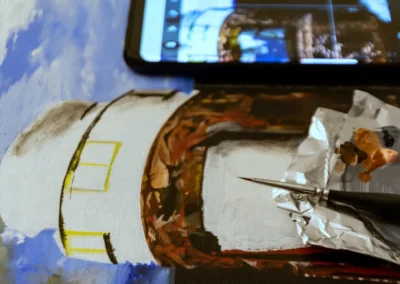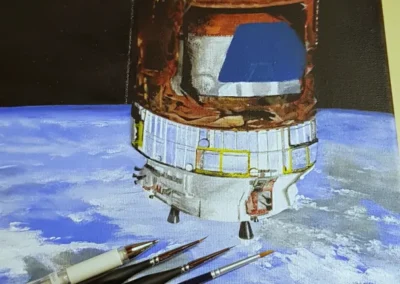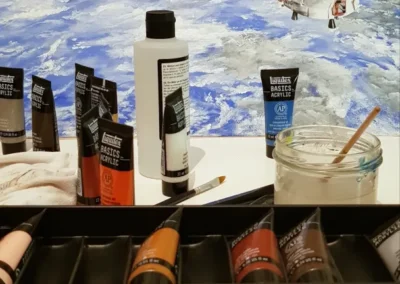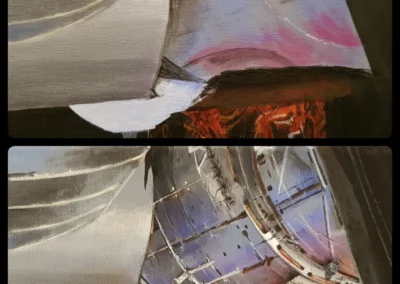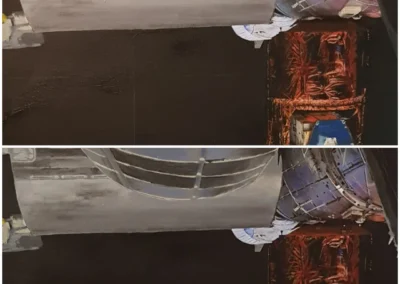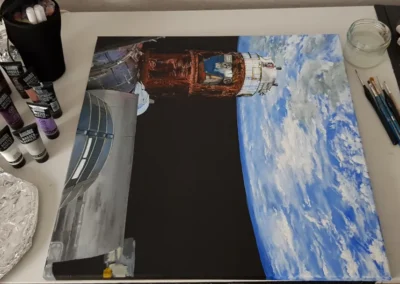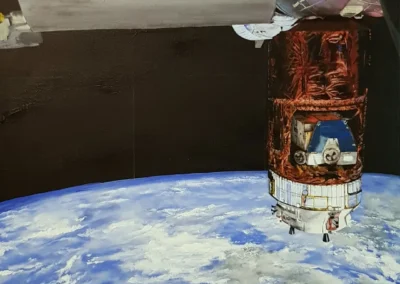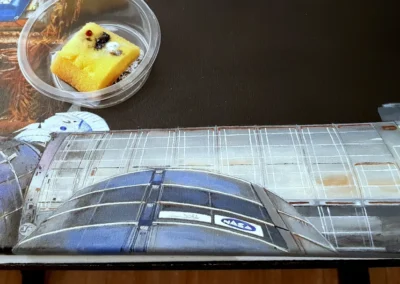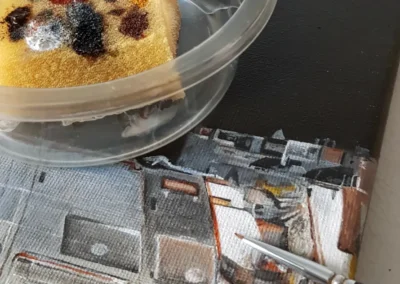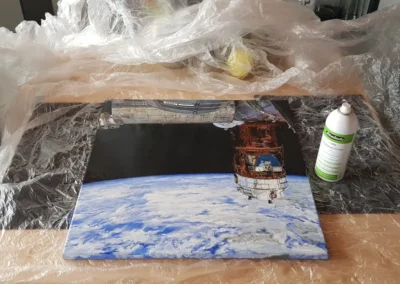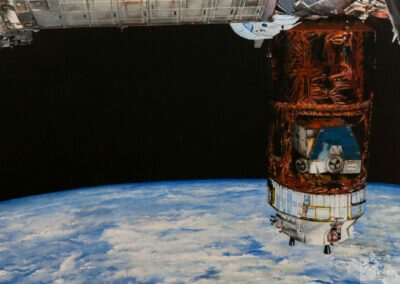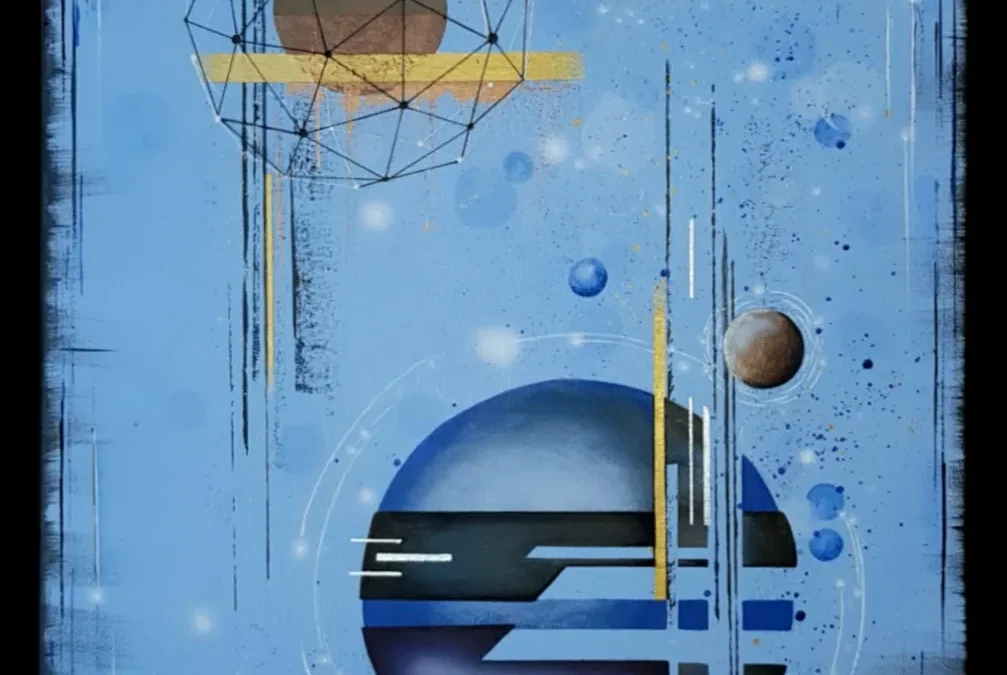
Technoparasite
50×70 cm stretchedcanvas , acrylic, various technique
Let me begin (ironically) with a summary formulated by ChatGPT:
“From a spiritual perspective, technology itself is neither good nor bad, but without moral maturity it is dangerous.”
This is an alternative dystopia where technological development and moral decay go hand in hand—each reinforcing the other and leading to an extreme, yet familiar, worldview.
I started from two very different, yet deeply complementary sources of inspiration: one is the parasitic species of the Cordyceps fungus genus, capable of manipulating the behavior of their hosts; the other is the theory of Soviet astrophysicist Nikolai Semyonovich Kardashev—the Kardashev Scale, which classifies civilizations according to their technological advancement. (Perhaps these two names have never before appeared in the same sentence in the history of humanity).
In this painting, I also tried to emphasize the concept through contrasts in every respect: thematically, formally, and in the use of materials. Naturally, this did not come to fruition in just a few days; from the birth of the original idea, it underwent countless changes.
The image depicts an organic lifeform that has reached the level of an interstellar civilization but lost its moral compass long ago. It uses its intelligence not for progress, but for exploitation; for it, technology is not a tool of inner order, but a mere, self-serving substitute. (I would simply interpret this in the present tense as, for example, when an innocent photo is manipulated using technology and then used for blackmail). It has become a kind of invisible parasite that does not attack directly, but leaves its mark only through the distortion of behavior.
In the lower right portion of the painting, on the planet, one can see the subtle ring-like pattern that a parasitic fungus can cause on an insect. In the upper left corner, there is a Dyson swarm—an artificially created system for harvesting a star’s energy.
“The voices of the machines have grown so loud that we can no longer hear the whisper of conscience.”
These are just my thoughts at the moment, what led me to create this painting.
I am very happy if anyone comes up with any thoughts of their own simply by looking at the piece, even without knowing mine, or perhaps influenced by them; I believe it can, on its own, raise exciting questions.
Thank you for taking the time to read this!
